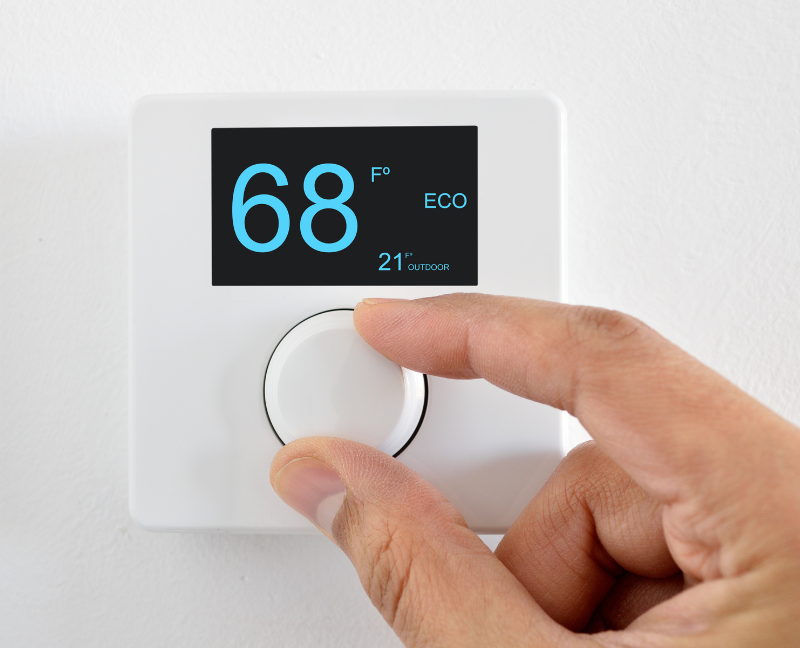Living an environmentally-friendly lifestyle is sometimes misunderstood, mainly because it's costly, inconvenient, and demanding.
But in reality, choosing to live in a sustainable way is relatively simple; all it takes is one slight adjustment at a time to make a big difference. In this post, we’ll share some eco-friendly tips to help you get started.
Tips On How To Make Your Home Eco-Friendly
1. Opt For LED Light Bulbs Instead
The average home uses 9% of its energy on lighting.
Now, if you want to lower your energy bill and environmental impact from all your light bulbs, using LED bulbs is a cheap and easy alternative. It also provides high-quality light output and emits less heat, unlike standard bulbs, which might make your air conditioner work harder.
LED bulbs have also evolved to fit recessed lighting and dimming controls.
2. Don't Purchase Bottled Water
Not only are plastic water bottles uneconomical, but it's also harmful to the environment. Plastic production requires three times the water in a water bottle to make one, yet 80 percent aren't recycled.
So instead of constantly buying a plastic bottle, get a reusable, portable water bottle.
Not only will you save money by reusing a water bottle, but there will also be fewer plastic bottles needed.
3. Begin Composting And Recycling
The good thing about having recycle bins is that it makes you more aware of recycling glass bottles, jars, paper, and other objects. To simplify recycling and composting, have trash and recycling bins in more than just the kitchen.
Meanwhile, a compost bin will let you eliminate leftovers and give your plants free fertilizer.
Tip: Make sure that the compost bin has a tight cover and a secure hatch at the bottom for extracting fertilizer when ready to use to avoid pests.
4. Eat Less Meat
Reducing meat consumption can create a significant impact on the environment as it helps reduce GWP emissions.
In case you didn't know, more than 30 percent of the Earth’s surface is being used to raise and support livestock.
“The livestock sector accounts for 9 percent of CO2 deriving from human-related activities but produces a much larger share of even more harmful greenhouse gasses. It generates 65 percent of human-related nitrous oxide, which has 296 times the Global Warming Potential (GWP) of CO2," according to research by the United Nations.
Other than the GWP gas emission, consuming fewer farm animals means having more land to use for recreation.
So instead of having meat-only meals, consider consuming more vegetables and seafood.
5. Less Paper Towel Use
Choosing to live in an eco-friendly home setup doesn't mean leaving paper towels for good. It's about using old shirts or fabric for cleaning or drying instead of buying a dozen paper towels.
6. Make Use Of Eco-Friendly Toilet Paper
Regular toilet paper is not eco-friendly because everyone uses 100 rolls yearly.
If you want to switch to an eco-living lifestyle, you should use bamboo toilet paper for the sake of environmental sustainability since there are bamboo species that grow 36 inches in 24 hours.

7. Set Up A Smart Thermostat
Monitor and control your HVAC systems with a programmable thermostat. Smart thermostats lower utility bills and make homes greener. It also saves energy, which, for some, is the main reason to upgrade.
A smart thermostat lets you arrange your HVAC to operate less while you're away, saving you energy by cooling your home just when you're home.
You can set your digital thermostat to turn on right before family members arrive to cool your home to 72 degrees from the minute you enter. Nest claims 15 percent cooling savings and 10–12 percent heating savings.
8. Cut The Lights And Unplug Any Unused Electronics
Turning them off while leaving a room, especially when leaving the house, saves energy and money. However, the electricity saved by turning the electric lights off depends on the bulbs used.
For instance, incandescent bulbs are energy-inefficient. Before producing light, these lights convert electricity into heat. It provides 90% heat and 10% light. Thus, turning off incandescent light bulbs saves energy at home.
So if you leave your house for over 15 minutes, be sure to switch them off to save electricity. The method also extends CFL bulb life.
Meanwhile, LED bulbs won't be affected by turning them on or off.
One of LED lamps' key features makes them perfect for residential energy conservation. They can also be turned on and off automatically and brightened instantaneously with sensors.
9. Wash Your Clothes With Cold Water
Energy Star estimates that washing machines consume 90% of their energy to heat water. Washing with cold water can reduce carbon dioxide emissions by 1,600 pounds annually.
Instead of heating, run your washing machine on cold. Not only does this cut carbon dioxide emissions, but it also preserves your garments, as hot water can fade colored clothes.
Unless you have oil stains, there's no use in washing on hot. You can try warm water if cold doesn't work. Still better than hot water; it cleans better than cold water.
10. Using A Clothesline To Dry Laundry
The EPA found that dryers use more energy than refrigerators, washers, and dishwashers, and line drying can cut primary appliance energy use by one-third.
Fresh-air line-drying is remarkable. Also, drying clothes and bedding on a rack outside instead of in the dryer will prolong their life. Establishing a drying rack on your balcony and opening the windows will let the sun dry your clothing faster if you don't have a garden or backyard.
11. Make Use Of Natural Cleaning Supplies
Home cleaning supplies contain the most potent bacteria-killers. These products are designed to kill almost all organisms. Man-made poisons harm the ecosystem and kill animals and plants once they enter our waterways via sewers, and these are just some of the reasons why opting for natural cleaning ingredients is a must.
Using organic cleaning products might be a better option but it can be costly. What you can do instead is to use DIY cleaning products made with vinegar, baking soda, and lemon juice. Not only is this eco-friendly, but it also helps reduce packaging waste and household chemical pollution.
12. Make Use Of Reusable Grocery Bags
Canvas bags replace inefficient plastic and paper bags at most stores. Although canvas bags are inexpensive, they are convenient. Canvas bags are more robust, hold more than plastic or paper bags, and help store and transfer objects.
Even if you don't use canvas bags, reusing plastic bags benefits the environment. Put plastic bags in tiny trash cans around the house or recycle them. Every little bit helps.
These are just some ways to make your home eco-friendly. Watch out for Part 2 to learn more tips.

